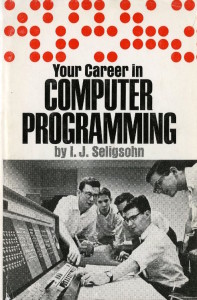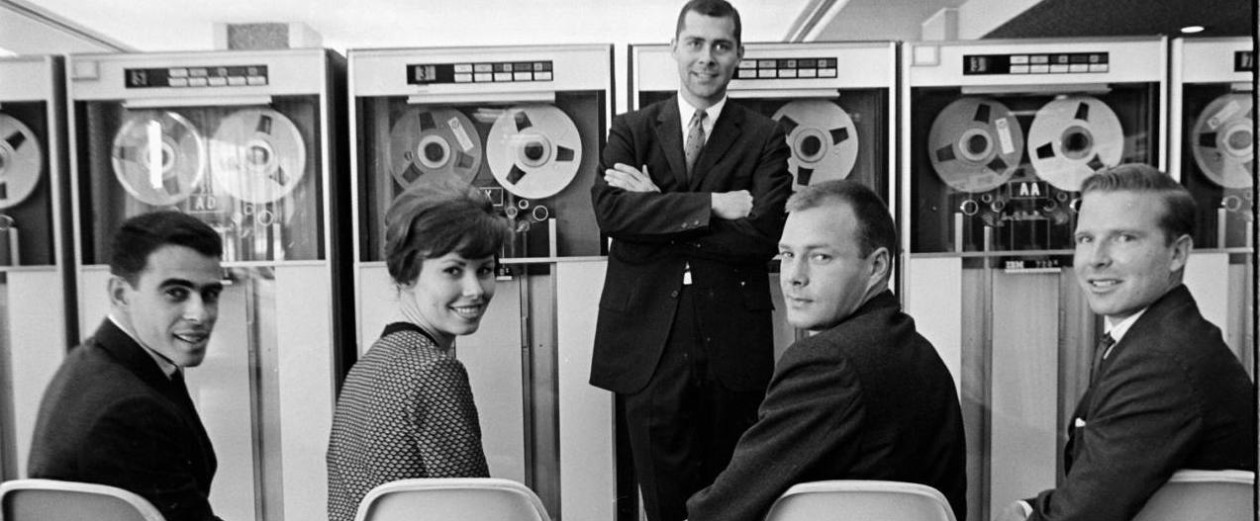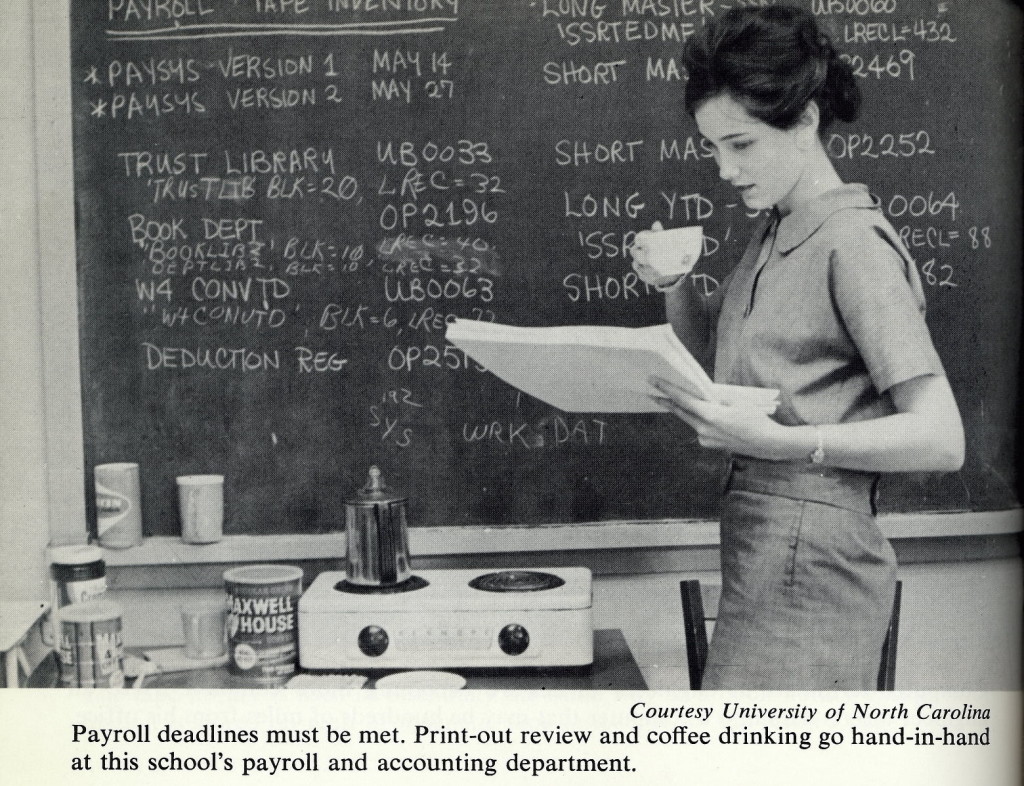 It is always a little frustrating as an historian to find the perfect primary source document after you have already published your manuscript. In my case, I only recently came across Your Career in Computer Programming, a 1967 book by an IBM public relations officer named I.J. Seligsohn. The book would have been invaluable to me in writing The Computer Boys Take Over. At it is, finding it has at least been validating: much of what is new (to me, at least) in Seligsohn confirms the conclusions I came to from other sources. In any case, this book is an absolute gem: written by an NYT English major and science-fiction author, it is full of engaging and insightful anecdotes, particularly about the role of women in early computing.
It is always a little frustrating as an historian to find the perfect primary source document after you have already published your manuscript. In my case, I only recently came across Your Career in Computer Programming, a 1967 book by an IBM public relations officer named I.J. Seligsohn. The book would have been invaluable to me in writing The Computer Boys Take Over. At it is, finding it has at least been validating: much of what is new (to me, at least) in Seligsohn confirms the conclusions I came to from other sources. In any case, this book is an absolute gem: written by an NYT English major and science-fiction author, it is full of engaging and insightful anecdotes, particularly about the role of women in early computing.
For example, he quotes a Hungarian-American programmer named Agnes Bodony who started as a keypunch operator, advanced to systems programmer, and eventually ended up starting her own freelance programming business:
It isn’t easy to get started in free-lance programming; don’t get me wrong. But I know of no other job that can be so easily satisfying to a girl with a logical mind, that can pay her so well, and still keep her close to her family.
The Bodony story is not an isolated incident. The book is full of stories from women, and in fact includes an entire chapter devoted to women in computing (“The Equal Sex”). Seligsohn goes so far as to suggest that female programmers are not only equal in ability to men, but superior:
Given a complex customer problem, a female analyst/programmer will often handle the problem better than would her male colleagues with equivalent experience and ability. Not because businessmen are more lenient or show favoritism toward the female of the species, but because the female is often more sensitive to the nuances of a problem and to the complex interpersonal relations that may be part of the problem. In a very real sense, every computer problem with a customer is also a customer relations problem, and this is where feminine tact, insight, and intuition, combining with solid programming and analytical ability, can really pay off for the girl programmer.
The entire book is brilliant, and I expect to draw on it heavily in future presentations of the gendered history of computer programming. With the exception of Janet Abbate’s recent Recoding Gender, I cannot think of a single source that contains more stories from actual women programmers from this period.
One particularly extraordinary story that Seligsohn tells is that of Bobbi Johnson (now Bobbi Johnson Kaufmann). Johnson was the valedictorian of her class in high school, a recipient of an NSF scholarship, the secretary of her freshman class at the University of Kansas, where she was a Dean’s List student. In 1964 Johnson won the Miss USA contest:
The night I won the Miss USA contest, the reporters asked what career ambitions I had. I guess they thought I’d say something like modeling or becoming an actress, but I said the first thing that popped into my head: that I wanted to be a computer programmer… The very next day I was flooded with telegrams from companies offering me jobs in programming.
Despite receiving other offers to model and act in movies, Johnson stuck with her ambition to become a programmer and was hired at GE to program GE 400-series and Datanet 30 computer systems.
Other stories of notable women include those of Rita McCabe, who was at the time the corporate director for systems personnel at IBM. In the book, McCabe talks of the more than 1,000 women who worked as programmers at IBM. Elsewhere, she estimated that 1200 of the 2500 programmers who worked at IBM were women. Eleanor Irvine was a graduate of one of the first classes of women programmers at IBM, and went on to found and run a personnel firm called New Concepts that specialized in hiring programmers. Margaret Pentaleri founded Computer Programmers & Analysts, Inc, which went public in 1966 at an IPO of more than $4 million. Judith Clapp learned to program on the Harvard Mark I computer, and worked at the MIT Lincoln Lab. The picture of the presence of women in computing that appears in this book from 1966 is remarkable.



 Follow
Follow